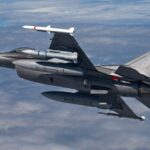
The contract award for the Air Force’s next-generation advanced pilot trainer is expected to be a boon for winners Boeing [BA] and its partner Saab, analysts said.The service announced Sept. 27 that the Boeing-Saab team had secured a contract worth up to $9.2 billion for 351 T-X aircraft and 46 simulators to replace the service’s aging T-38 trainer fleet, with the option to buy up to 475 aircraft and 120 simulators. The initial contract is worth $813 million for the…

 By
By 











